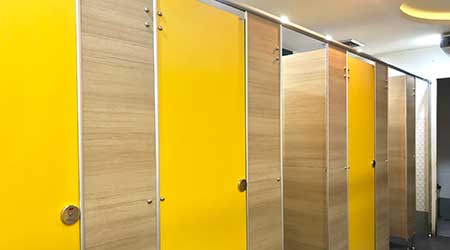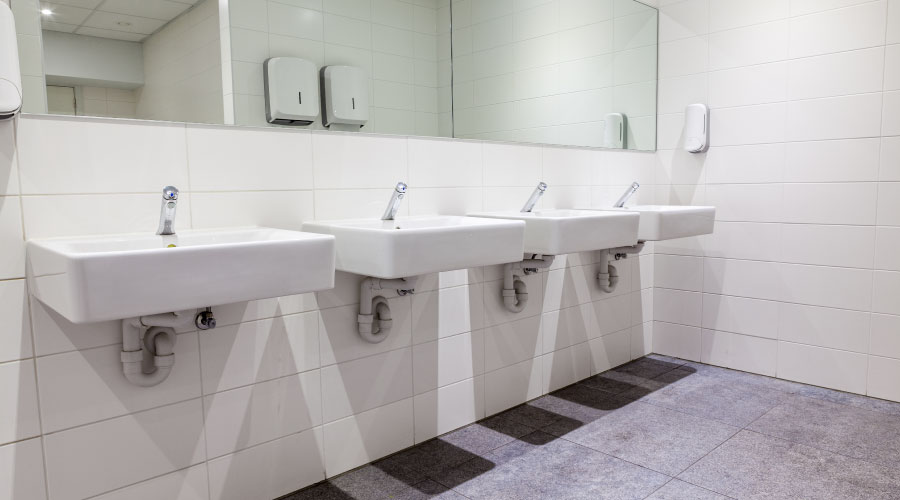 In the shift to becoming all-inclusive, the first issue is privacy. Minimizing sight lines by closing gaps around doors and extending partitions as close to the floor and ceiling as possible increases privacy.
In the shift to becoming all-inclusive, the first issue is privacy. Minimizing sight lines by closing gaps around doors and extending partitions as close to the floor and ceiling as possible increases privacy. How to Measure Results of Design Shifts to All-Inclusive Restrooms
To determine the ROI of restroom design changes, it's important to quantify customer satisfaction regarding how well the spaces are working.
Modifying restrooms to provide more equitable access for gender, religious needs, and to meet the various levels of disabilities facing a building’s population comes with a cost.
But as Horn points out, more and more consumers, especially younger customers, are choosing to patronize brands and businesses that are socially responsible. “Tangible actions, not simply lip service, are required to address consumer expectations, and businesses run the risk of alienating and losing the next generation if they ignore their expectations,” Horn says.
One way to measure the ROI in restroom redesigns is to measure customer satisfaction and monitor online reviews. There is a direct correlation of customer satisfaction to the types and quality of the amenities that a building provides.
“If customers find amenities such as restrooms uncomfortable or not accessible, the facility may not see repeat business, which will directly impact the bottom line,” Horn says.
While evaluating the ROI of restroom modifications is important, it is also important for facility managers to pay attention to ongoing changes in building codes. For example, the International Building Code, the model code book used by 35 states, will allow multi-user all gender restrooms for the first time in the 2021 edition.
As Garbow explains, adoption is voluntary (each state needs to update their own individual building codes) so widespread implementation could be some years away.
“But the trend is clear, and the door is open for more and more facilities to have multi-user restrooms that can be used by any gender,” Garbow says. “My hope is that the public restroom no longer becomes a culture war battleground. This isn't just about making people feel included. This is about civil rights for trans and nonbinary people, the right to exist in public space, to feel comfortable and to thrive. And what's more fundamental than that?”
Hoffman agrees that the basic concept of dignity is a universal concept. Building owners and design professionals’ awareness is the key to ensuring that equality, when designing restroom facilities is an important necessity, not an afterthought.
“Everyone understands the need for privacy,” Hoffman says. “We are all in agreement in this regard. Failing to provide that ability for everyone will be harder to ignore. The sooner in a design process these concepts and priorities are discussed the better able the design team can accommodate a solution that is the right approach for the building type and occupants.”
Maura Keller is a Twin Cities-based writer and editor.
Related Topics:














